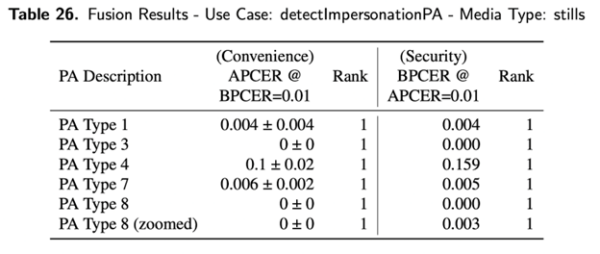The rapid advancements in Artificial Intelligence (AI) have been reshaping numerous sectors, and biometric authentication is no exception. The strong performance of passive facial liveness, as demonstrated in a recent evaluation by NIST, implies that active liveness at large will eventually follow techniques requiring smiling and blinking towards obsolescence. Here’s why the future will likely not need active liveness at all.
The recent NIST FATE PAD evaluation of facial liveness detection algorithms1 focused explicitly on passive, software-based techniques. A passive approach contrasts with an active approach in that it doesn’t require command-and-response interaction of any kind with the user. Examples of such interaction are blinking, nodding, smiling, or moving their device. In a truly transparent passive system, the users and would-be fraudsters are not even aware that a liveness check is taking place. An even more user-friendly approach uses just a single image, avoiding the latency associated with transmitting and analyzing video streams. Even when using a single image, the results of the NIST evaluation were compelling.
The NIST PAD evaluation included an assessment of algorithm “fusion”, applying the top four algorithms in concert. As shown in Table 26 of the report (included below), a fusion of passive algorithms achieved zero or near-zero error rates for both convenience- and security-optimized scenarios. The evaluation shows that without active user participation (or fraudster awareness), AI-driven systems can discern genuine biometric data from spoofed ones with extremely high accuracy.

To understand the implications of the NIST evaluation, it helps to consider the broader landscape of facial recognition technology. Over the years, facial recognition systems have seen exponential improvements. Between 2014 and 2018, facial recognition software got 20 times better at searching a database to find a matching photograph, according to NIST research. This consistent progress suggests that as facial recognition becomes more accurate, so will passive liveness detection methods.
Users prefer a seamless experience, and case studies have shown the dramatic reduction in onboarding abandonment rates that can result from removing friction from the process. Given the trajectory of AI’s capabilities in passive liveness detection, the need for active liveness is being called into question. If passive methods can achieve near-perfect accuracy rates using just a single image, the additional friction imposed by active liveness will become superfluous.
Results shown from NIST do not constitute an endorsement for any particular system, product, service, or company by NIST. More information can be found on the NIST FRVT webpage.
1Mei Ngan, Patrick Grother, Austin Hom (2023) Face Analysis Technology Evaluation (FATE) Part 10: Performance of Passive, Software-Based Presentation Attack Detection (PAD) Algorithms. (National Institute of Standards and Technology, Gaithersburg, MD), NIST IR 8491.
